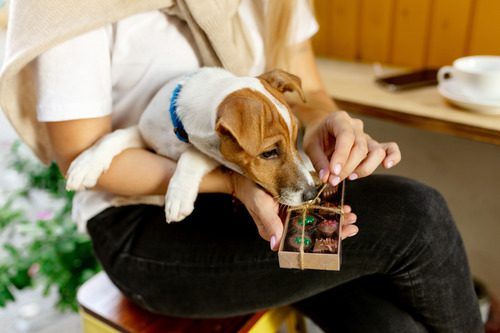How to Prevent Dental Disease

Now that we know how serious dental disease can be, and how it progresses…what can we do to slow it down or prevent it? The good news is, the most important type of dental care is something you can easily do at home! Overall dental care for your pets is very similar to dental care for us – Daily care with brushing and flossing is critical but going to the dentist occasionally is also important to clear any calculus/tartar that you can’t address on your own at home. For our pets, there are also options for daily dental care and your primary care veterinarian can help perform a dentistry as needed to clear any calculus/tartar that develops from time to time.
Below are some daily dental care recommendations:
- Tooth Brushing: This is the ideal way to slow the progression of dental disease. Since dogs and cats do not know how to spit, it is critical that you use a dog or cat specific toothpaste. You can place this toothpaste on a toothbrush and gently brush all along the upper and lower rows of teeth, making sure to get the premolars and molars at the back of the mouth as well as the incisors and canines at the front of the mouth.
- Dental Chews: There are many treats that serve as dental chews, however not every product is going to do a great job of removing the plaque on your pet’s teeth. The key is to find a reliable product and offer your pet the correct size (to encourage chewing). For recommended dental products, you can look at www.VOHC.org or look for Veterinary Oral Health Council (VOHC) or CET approved products.
- Other: There are also prescription dental diets, water additives, etc. that can be used to help sustain your pet’s teeth. None of these are as good as the physical removal that brushing teeth offers, and dental chews can sometimes offer. For this reason, it is important to talk to your veterinarian when considering alternative dental cleaning options to see what will work best for your pet.
With daily cleaning, you can help prevent the buildup of plaque and therefore calculus/tartar. However, over time there will be some buildup that you can’t prevent. Once you start to notice red or raw looking gums, brown or yellow discoloration on the teeth, or a hard shell covering your pet’s teeth, it is time to consider a dental cleaning. Generally, this dental disease begins along the molars and premolars first, so it’s important to check towards the back of your pet’s mouth to determine if a dental cleaning is needed. If you’re not sure how to assess your pet’s teeth, you can always bring your pet in for a visit with the veterinarian to determine the best time for a dental cleaning. The goals with planning dental cleanings are:
- Minimize frequency: Dental cleanings require full anesthesia to ensure your pet doesn’t become stressed or uncomfortable. For this reason, we do not want to do dental cleanings more often than is truly needed for the individual pet.
- Maximize Efficacy: We want to perform a dental cleaning when there is calculus to clean, but before the infection has caused teeth to be unhealthy and require extraction! Once a tooth has moderate damage to the surrounding gums and bone from infection, it is unable to be saved and must be extracted. In this way, we want to clean at a time when we can best preserve teeth and clean them!
In the end, your pet’s smile is priceless. At Heart + Paw, we are committed to empowering you to continue daily dental care at home so that we can minimize the need for dental cleanings performed by a veterinarian. However, when a dental cleaning is required, we are prepared with the dental x-rays and monitoring equipment necessary to not only keep your pet safe but also catch any and all evidence of dental disease. With a thorough cleaning and dental x-rays, we can make sure that no pocket of bacteria or potential problem goes unaddressed so that your pet wakes up comfortable and ready to smile!
Recent Posts
Can Dogs Eat Ham?
Ham is a popular meat found on many dinner tables, especially during the holidays. As a dog…
8 Signs and Symptoms of Diabetes in Dogs
Caring for a dog means being tuned in to the subtle changes that can reveal their overall…
Why Dogs Can’t Eat Chocolate and Tips for Keeping This Sweet Treat Out of Their Reach
Chocolate is a beloved indulgence for us, but for our dogs, it’s a hidden danger that can…
Why Cat Teeth Cleaning is Important For Your Pet’s Health
As a cat owner, you know how important it is to care for your feline friend’s overall…
Cat Body Language: A Guide To Understand What Your Cat is Telling You
Imagine trying to communicate without words, relying solely on subtle gestures, glances, and movements. This is how…
About Us
Heart + Paw was founded in 2018 by Chief Veterinary Officer Dr. George Melillo, who currently serves the Mid-Atlantic area. Heart + Paw offers a combination of veterinary care, pet grooming, and dog daycare to help be a resource in your pet parenthood journey.
We'd Love to Meet Your Four-Legged Friends
Find out how the friendly veterinary team at your local Heart + Paw can help your pets live longer, healthier lives by searching for a location near you.





